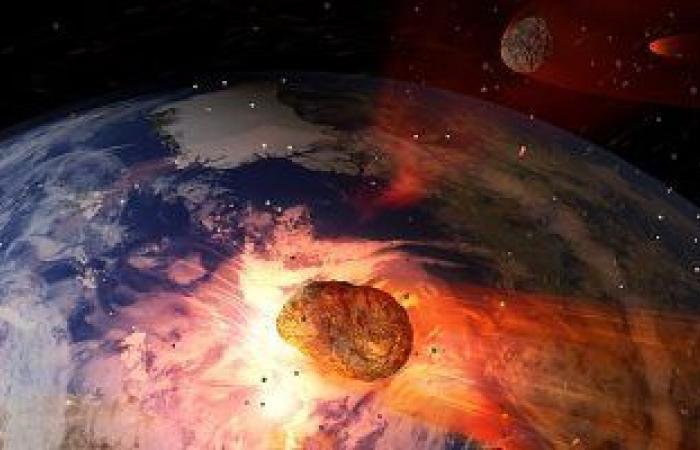A study revealed that an asteroid collision 66 million years ago released dust into the Earth’s upper atmosphere blocking the sun and killing dinosaurs, as new evidence discovered from the Chicxulub crater indicates that the black carbon that filled the atmosphere after the asteroid hit the Earth 66 million years ago was It is caused by collision and not by wildfires as previously expected.
According to the British newspaper “Daily Mail”, the researchers analyzed sediments from the crater, which is now located on the Yucatan Peninsula, and the nearby ocean sites to determine the source of soot that blocked the sun.
The team found a group of hydrocarbons that quickly heated up during the event that released sulfate droplets and dust into the atmosphere, triggering the winter effect that led to the mass extinction.
The asteroid collided with a shallow sea in what is known as the Gulf of Mexico, which led to the mass extinction between the Cretaceous and Paleogene periods, and evidence of the impact has been discovered all over the world and in the border records. K-Pg, Which are features of rocks that preserve information about Earth’s history.
Scientists have long expected that when the asteroid collided, this event triggered massive forest fires that released intense soot into the atmosphere, but a team of researchers from the United States, Australia and the United Kingdom discovered a new story at the crater site, and the work involved analyzing sediment samples from inside the Chicxulub crater and from Other ocean sites near the crater.
The researchers focused their analysis on polycyclic aromatic hydrocarbons, which could provide evidence of the source of black carbon, and this led them to a fossil source that released black carbon rather than from the burning material from wildfires.
They also found that the properties of the PAHs showed that they arose due to rapid heating, which the researchers noted was consistent with the rock material emitted from the impact crater.
The researchers also found small amounts of charcoal in the samples, indicating that a small amount of the burned biomass also made its way into the atmosphere.
These were the details of the news Did an asteroid collision with Earth 66 million years ago block... for this day. We hope that we have succeeded by giving you the full details and information. To follow all our news, you can subscribe to the alerts system or to one of our different systems to provide you with all that is new.
It is also worth noting that the original news has been published and is available at eg24.news and the editorial team at AlKhaleej Today has confirmed it and it has been modified, and it may have been completely transferred or quoted from it and you can read and follow this news from its main source.

